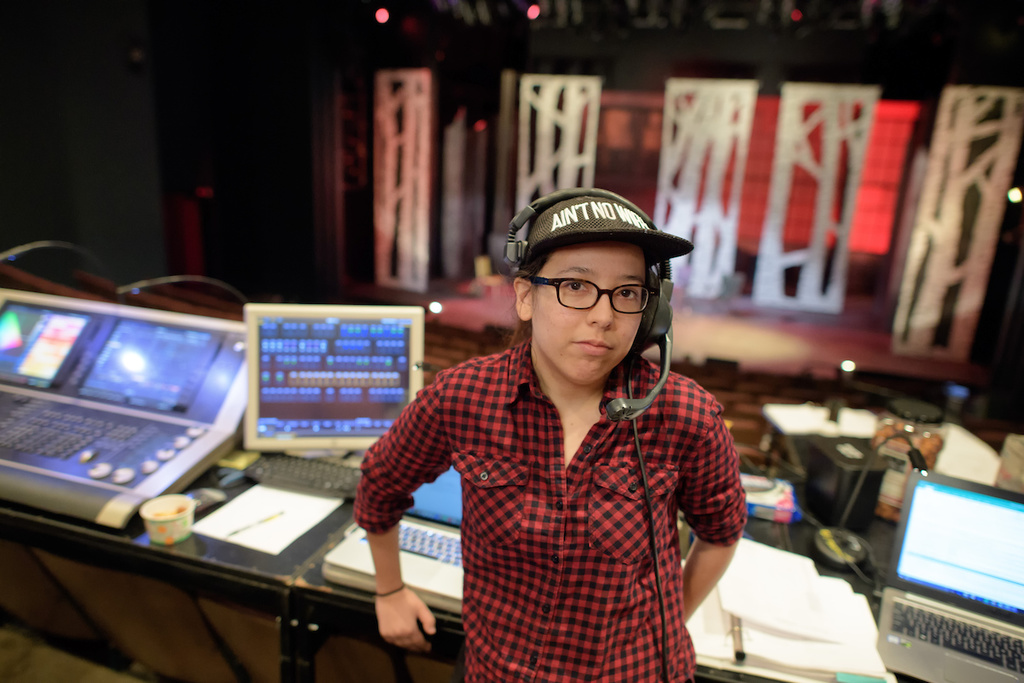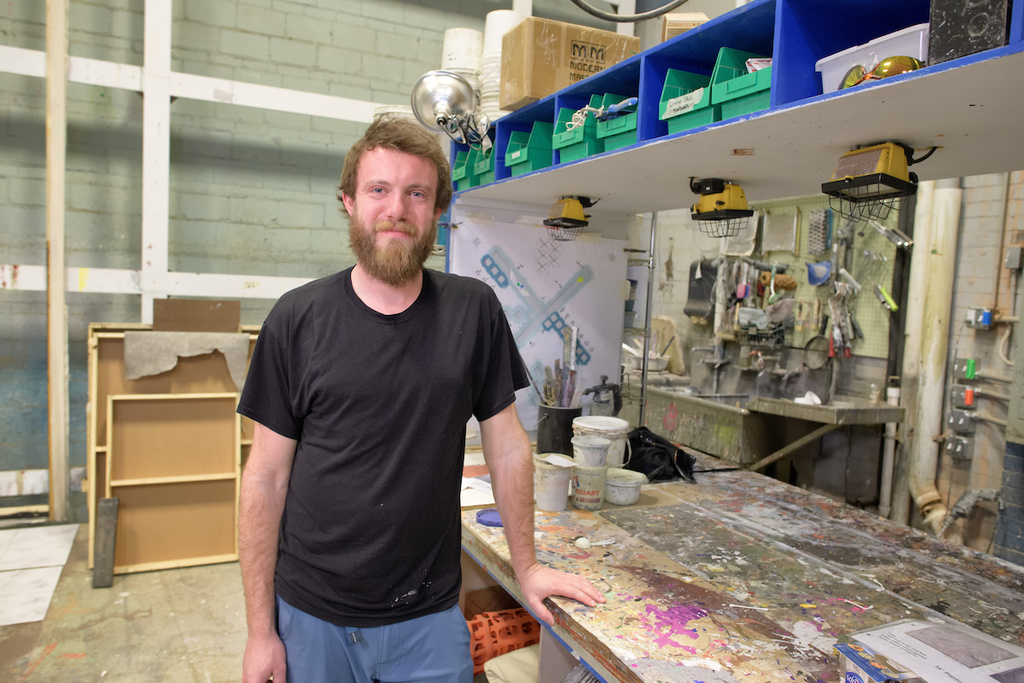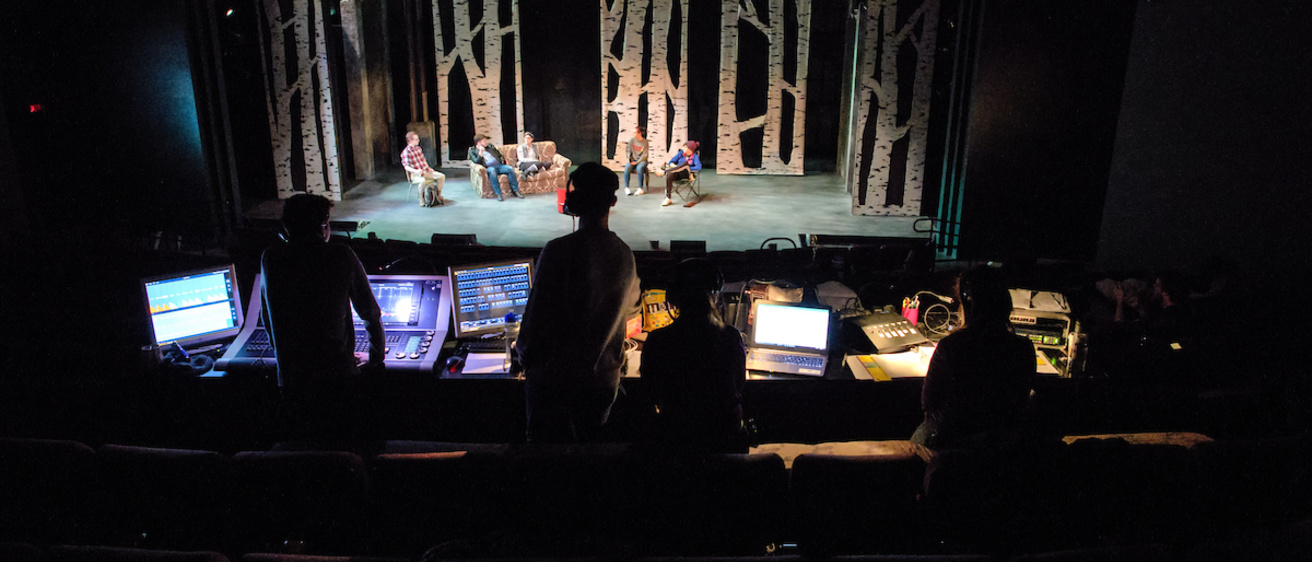Imagine a world without electricity. No smart phones, no internet, no movies—and no more episodes of The Simpsons.
That’s the world in which Mr. Burns, a Post-Electric Play is set. Written by Anne Washburn, the critically acclaimed play explores what happens after an unknown global disaster destroys the electrical grid. For one group of survivors, trying to recount a classic episode of The Simpsons around a fire allows them a few moments of familiarity and escape from a world turned upside down.
Mr. Burns, a Post-Electric Play
Presented by the Department of Theatre Arts
E.C. Mabie Theatre
200 N. Riverside Drive
Showtimes
Friday, Feb. 3, at 8 p.m.
Saturday, Feb. 4, at 8 p.m.
Sunday, Feb. 5, at 2 p.m.
Wednesday, Feb. 8, at 8 p.m.
Thursday, Feb. 9, at 8 p.m.
Friday, Feb. 10, at 8 p.m.
Saturday, Feb. 11, at 8 p.m.
Sunday, Feb. 12, at 2 p.m.
The three-act play, directed by University of Iowa assistant professor Tlaloc Rivas and set to debut at E.C. Mabie Theatre at 8 p.m. on Friday, Feb. 3, follows as the survivors’ campfire stories evolve into a new entertainment industry where the digital culture we know and—usually—love is reimagined without the familiar technology.
It was up to lighting designer Alex Casillas and scenic designer Nic Wilson, both third-year graduate students in the UI’s theatre arts program, to build much of this strange, unsettling world. Their contributions to the production are also part of their thesis work at the UI.
Eric Stone, associate professor in theatre arts and head of design at the UI, says this production is the largest that either student has worked on while pursuing their MFA in theatre design.
“This is definitely the most challenging show,” says Casillas, a graduate fellow from Houston, Texas. “It is the most complex show that I’ve worked on in my life.”
The somewhat obvious challenge for Casillas is lighting a world without electricity.
“We have to take the fact that there is no electricity and put that in a box because we can’t sit and stare at a dark stage,” she says. “We also have to take a very naturalistic approach to Act I so that we can create a set of rules that we then break.”
This is where Casillas’ creativity shines. Despite the lack of electricity in the world she is creating, Casillas estimates upwards of 300 lighting instruments will be used in the play, from traditional theater lighting to paint cans Casillas repurposed as light fixtures for additional on-stage lighting.
“This is putting every tool that I’ve learned here to use,” Casillas says.

The challenges for Wilson are the volume of scenery he’s had to work with and the fact that he is designing a play that takes place over 82 years.
“This has been the show that has had to have the most going on in terms of pieces, parts moving, moving scenery in different locations,” says Wilson, a native of Dallas, Oregon, who also works as a teaching assistant in design.
Getting the look of the show right required considerable collaboration between he and Casillas, who both say they couldn’t be more different in their design philosophies and processes.
“I almost think that this is the perfect show to bring us together,” Casillas says.
“It is,” Wilson says. “My design style is much more structured, and Alex’s style is more organic and artistic.”
Both view this production as the culmination of their graduate work at the UI, though they’ll still have a few smaller projects to complete before graduation.
“For us, the thesis is very different than your traditional thesis,” says Wilson, noting there is no long, written paper. “Our work is really in the photographs that we take. With live art, it’s here, up for two weeks, and then it’s gone forever.”

Wilson and Casillas each will compile the photographs they’ve taken of their designs for their final portfolios. In addition to the photos, the students detail the design philosophy they’ve developed during their graduate studies and provide design statements for each show they’ve worked on over the three years.
“I didn’t have a design philosophy when I came here,” Casillas says. “I didn’t know what kind of designer I was. And then through the work you kind of figure out who you are and what your approach is to design.”
Tackling such a challenging project has been both creatively fulfilling for each of the students, but also an incredible learning experience.
“I think it’s definitely prepared me for shows that scenically require a lot of flexibility,” Wilson says of Mr. Burns.
“As a designer, what I’ve learned from this is, even if the goal is to break them, that it’s important to set rules for the world you’re creating,” Casillas says. “If you’re not at least consistently inconsistent, people aren’t going to be on board with the journey.”
Wilson plans to use his MFA to follow in the footsteps of faculty who inspired him. His goal is to teach scenic design while continuing his own design work. Meanwhile, Casillas hopes to one day help promote the work of female playwrights and playwrights of color.
In addition to working with each other, Casillas and Wilson also collaborated with faculty, including Rivas, Stone, and Bryon Winn, professor of theatre arts and director of theatre at the UI.
Winn, who has worked with both students during their time at the UI, describes the theatre arts graduate program as a three-year mentoring commitment on the part of the faculty.
“It doesn’t stop when you graduate, though,” Winn says. He still speaks with his former students regularly about productions they’re working on, even long after graduation.
